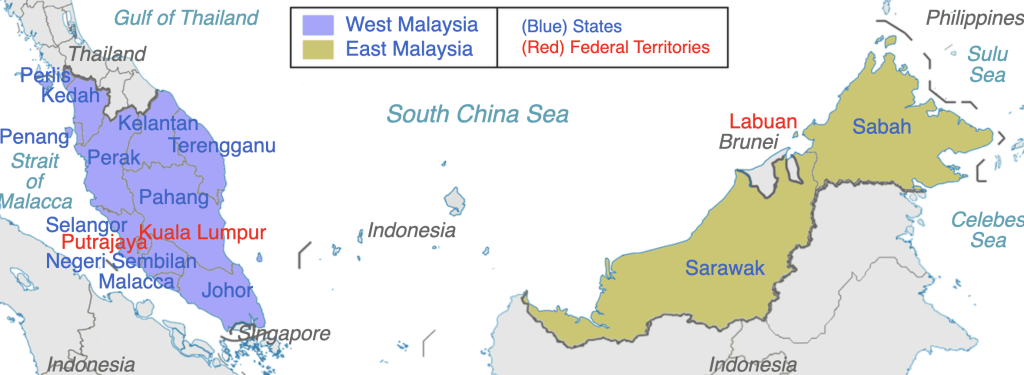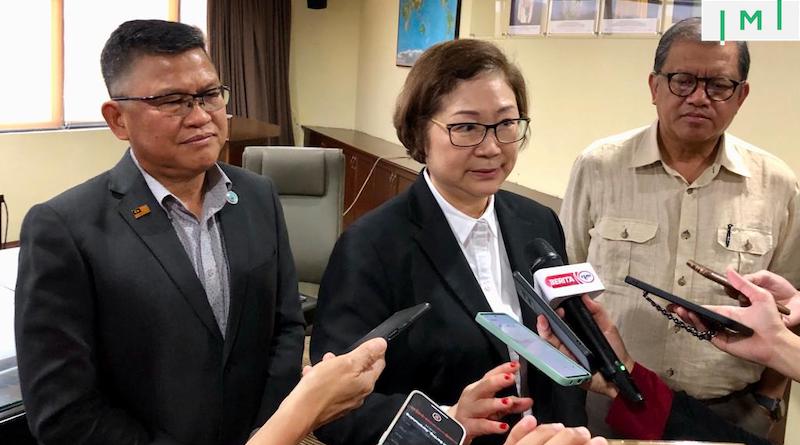State Govt. Approves New Sabah-MM2H: Malaysia Now Has 4 Residence-by-Deposit Programs With Different Prices
Of Malaysia’s 13 states (and 3 federal territories), two have autonomy over their immigration policies. Sarawak and Sabah – both of which are situated on Borneo, the island that Malaysia shares with Indonesia and Brunei – only joined the 11 states of what was then the Federation of Malaya to form Malaysia in 1963.
Among the terms of the agreement was that Sabah and Sarawak would retain independence from Peninsular Malaysia with regard to immigration policies. From time to time, therefore, the two states have seen it fit to break from the federal government on questions of immigration.

When the federal government, in 2021, first suspended and later reintroduced the MM2H at roundly criticized, far-higher minimum investment requirements, Sarawak decided to relaunch an MM2H program specifically for its territory, at terms similar to the previous federal program. It required deposits from MYR 150,000 (about US$35,000), a minimum monthly income of MYR 7,000 per month (about US$20,000 a year), and a 30-day minimum presence requirement (in Sarawak state).
On Thursday, Datuk Christina Liew, Sabah’s Culture and Environment Minister, told local press that the state government had “approved the policies which govern the prerequisites for participation in the program, and these include the age requirement, medical certification, and a fixed deposit account in Sabah.”
Without specifying whether the minimum amounts would differ depending on family size, she said a fixed deposit of MYR 200,000 (about US$47,000) in a Malaysian bank would be among the requirements. The visa would, like the other version of the MM2H, be valid for an initial five years and renewable for a further five, subject to the participant’s continued compliance with the requirements. Applicants will further need to provide certificates of good conduct from their home countries and a clean bill of health.
Program participants will also be permitted to buy apartments in Sabah but must, in such cases, spend at least MYR 600,000 (about US$141,000).
“It is anticipated that these participants will create a significant impact on the State’s economy, especially in real property development and the tourism industry,” added the Minister.
A peculiar aspect of the Sarawak MM2H and, as far as is discernable, also the Sabah MM2H is that while applicants must spend 30 days a year in the two East Malaysian states, they are free to reside throughout the country. Participants in either of the Borneoan MM2H programs, therefore, have the same access to the rest of Malaysia as participants in the far more expensive federal program (see a comparison in the table below). The federal program requires a minimum deposit of US$235,000, as well as a 90-day physical presence minimum.
Overview of Long-Stay, Capital-Based Visas in Southeast Asia
| Min. Bank Deposit (Cheapest Option) | Min. Fees (Cheapest Option) | Min. Annual Stay | Max. Visa Validity | Min. Annual Income | Min. Investment | Path to PR or Citizenship | Min. Age | |
|---|---|---|---|---|---|---|---|---|
| Malaysia M2H | $235,000 | $1,060 | 90 days | 5+5 years | $100,000 | N/A | N/A | 35 |
| Malaysia M2H – Sabah | $47,000 | TBD | 30 days | 5+5 years | TBD | N/A | N/A | TBD |
| Malaysia M2H – Sarawak | $35,000 | $1,060 | 30 days | 5+5 years | $20,000 | N/A | N/A | 30 |
| Malaysia PVIP | $235,000 | $42,000 | N/A | 5+5 years | $100,000 | N/A | N/A | 18 |
| Cambodia M2H | N/A | N/A | N/A | 10 years (renewable) | N/A | $100,000 | Citizenship in 5 years | 18 |
| Indonesia M2H | $130,000 | $192 | N/A | 10 years | N/A | N/A | N/A | 18 |
| Thailand Elite Visa | N/A | $16,000 | N/A | 20 years | N/A | N/A | N/A | 18 |
| Thailand LTR Visa (Group 1) | N/A | $1,300 | N/A | 5 years (renewable) | $80,000 | $500,000 | N/A | 18 |
| Thailand LTR Visa (Group 2) | N/A | $1,300 | N/A | 5 years (renewable) | $80,000 | N/A | N/A | 50 |
| Thailand LTR Visa (Group 3) | N/A | $1,300 | N/A | 5 years (renewable) | $40,000 | N/A | N/A | 18 |
| Thailand LTR Visa (Group 4) | N/A | $1,300 | N/A | 5 years (renewable) | $80,000 | N/A | N/A | 18 |
| Philippines SIRV | N/A | $300 | N/A | N/A | N/A | $75,000 | Citizenship possible after 10 years | 18 |
Malaysia also recently launched the Premium Visa Program, which perplexed market observers because its terms were nearly identical to the new federal MM2H, with two notable exceptions:
- Application fees were higher than those of the MM2H by a factor of 40
- There was no minimum presence requirement
All four of Malaysia’s residence-by-deposit programs allow participants to reside anywhere in Malaysia for ten years, but the two Borneo-based programs come at an 80% discount to their peninsular peers. No doubt, many prospective Malaysia-residents who wish to live in Western Malaysia will consider it more favorable to qualify under the MM2H of either Sarawak or Sabah than under the federal scheme.
More stories from Malaysia
- In Astonishing Claim, Malaysian Govt. Says Premium Visa Program Got 20,000 Applications on First Day
- Malaysia’s Surprise Introduction of “Premium Visa Program” for “Tycoons” Raises Eyebrows
- Malaysia To Exempt Existing MM2H Participants From Most New Rules
- 3 Lessons The Botched MM2H Relaunch Holds for Migration-Policymakers

